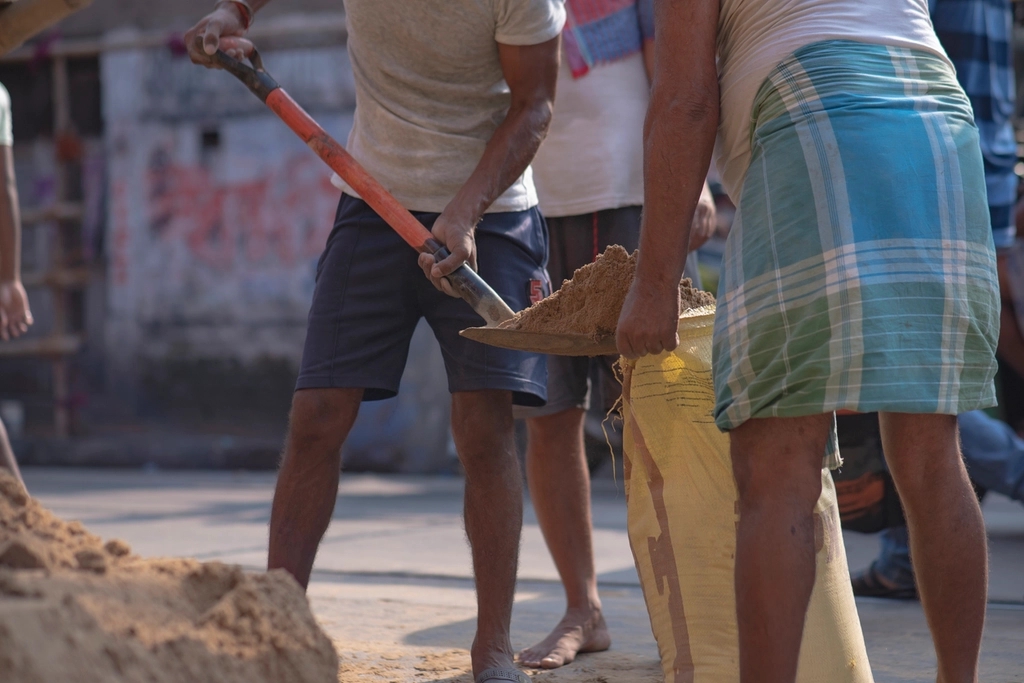Why climate funders are adopting a ‘resilience’ lens

by Jess Ayers, CEO, Quadrature Climate Foundation
Resilience is emerging as one of climate philanthropy’s most critical strategies — but not the passive resilience of simply withstanding shocks. This is about bouncing forward: Transforming how communities respond to climate devastation by unlocking new possibilities.
Philanthropy is operating in a profoundly different landscape than even a few years ago. Politically, we are seeing rising authoritarianism, backlash against climate and equity agendas, shrinking civic space, and growing distrust in institutions — all of which make long-term change harder and more urgent.
At the same time, climate change has entered a new phase. Its impacts are accelerating, compounding, and unavoidable. From floods and fires to food insecurity and forced migration, communities are already facing the consequences — especially those who did the least to cause them.
The stakes could not be higher: Philanthropic efforts must now simultaneously address immediate survival needs and lay the groundwork for fundamental system transformation. And so, many climate funders are responding to this new reality by adopting a resilience lens, prompting questions: What do we mean by resilience? How does it fit alongside important work on emissions reduction? And how does this reshape our funding priorities?
Our belief is that climate resilience and rapid decarbonization go hand in hand. Both require strategies that center justice, equity, and the needs of the communities most impacted by climate change.
What we mean by resilience
In engineering, resilience is defined as the ability of a system to bounce back from disruption. The Intergovernmental Panel on Climate Change and others use a similar definition for climate resilience: The capacity of social, economic, and environmental systems to anticipate, accommodate, respond to, and recover from climate impacts.
But simply bouncing back assumes the status quo is adequate. It’s not. The current global system — one that drives climate catastrophe, deepens poverty, fuels inequality and conflict, and restricts civic freedoms — is not a desirable end state.
So we must talk about bouncing forward — not just avoiding loss but unlocking new possibilities for those who are most vulnerable to climate shocks and least responsible for causing them.
Why a resilience lens is essential for emissions reductions
We cannot successfully reduce emissions without considering resilience. The climate and social systems are intertwined and mutually reinforcing.
Take infrastructure. Low-carbon systems must also be climate-proof. In 2017, Hurricane Maria devastated Puerto Rico, knocking out both conventional and renewable energy systems. In Europe, droughts have reduced hydropower projects and forced nuclear plants to shut down due to overheated rivers.
Ignoring resilience also weakens public support for climate policies. In France, a fuel tax meant to cut emissions sparked the 2018 Yellow Vest protests after low-income communities — offered little support — were hit hardest. In Kenya, a finance bill containing controversial tax hikes thought to be associated with President William Ruto's green policies was withdrawn after thousands of young people protested, undermining the president's regional and global climate leadership and legitimacy.
And then there’s cost. Climate disasters are draining public finances, especially in lower-income countries, and making it harder to invest in the low-carbon transition.
First, extreme weather events impose enormous rebuilding costs and economic losses. In 2024 alone, natural disasters caused an estimated $320 billion in losses globally. For lower-income countries, this often means lost GDP, damaged infrastructure, and diversion of funds away from climate investment toward emergency relief and recovery.
Second, many of these countries are already locked into unsustainable debt cycles. They are often seen as higher risk by lenders, so they face significantly higher borrowing costs, making it harder to fund long-term climate resilience or green infrastructure. When disasters strike, they may be forced to borrow even more at unfavourable terms, deepening the cycle of debt and dependency.
Without intervention, the most marginalized risk losing twice — first to climate impacts, and again if they’re left behind in the low-carbon transition.
Without rapid decarbonization, there is no resilience
The reverse is also true. There is no resilience without rapid emissions cuts. If we don’t mitigate, we face an unmanageable future.
If temperatures rise by 3–5 degrees Celsius, vast regions will become uninhabitable due to extreme heat, sea level rise, and ecosystem collapse. Some impacts are already irreversible: Entire coral reef systems that once supported fisheries and livelihoods have died.
And some communities are already preparing for permanent loss. In 2023, Tuvalu signed a climate migration agreement with Australia, which agreed to welcome 280 Tuvaluans per year as the island faces inundation.
What a resilience lens looks like in climate philanthrophy
Climate philanthropy has to double down on decarbonization efforts — there is no resilience in a higher carbon world. But applying a resilience lens means thinking more holistically about who benefits, who bears the costs, and how systems shift in practice. Increasingly, philanthropies are funding efforts that tackle climate and human vulnerability together.
On energy: Climate funders are backing initiatives like KawiSafi Ventures, which is delivering clean, affordable energy to more than 10 million people in East Africa — displacing 1 million tons of carbon while addressing energy poverty and inequality.
On cooling: Philanthropies are supporting the Clean Cooling Collaborative, which is scaling sustainable cooling while phasing out harmful refrigerants that drive short-term warming. Others are backing Climate Resilience for All, which has supported more than 225,000 women in India’s informal sector through insurance and cash payments during extreme heat waves.
On industry: Foundations are collaborating through the Global Industry Hub to accelerate a just transition in carbon-intensive sectors like steel and cement. At the same time, initiatives such as JUST Stories, from the Institute for Human Rights and Business, are elevating the perspective of workers, communities, and Indigenous groups navigating the trade-offs of industrial transition.
On place-based strategies: Philanthropies are also funding local, integrated responses. In Freetown, Sierra Leone, Mayor Yvonne Aki-Sawyerr — supported by C40 and Climate Resilience for All — has launched a Heat Action Plan co-designed with vulnerable communities. It brings together clean energy, nature-based solutions, and cooling infrastructure to protect health and livelihoods.
From words to action: Funding a resilient future
If resilience is about bouncing forward, the real question is: How do we fund solutions that not only respond to climate change but help reshape the systems that caused it?
Climate change isn’t just an environmental problem; it’s a human one. And climate philanthropy must evolve to meet that challenge.
This means not only shifting what we fund — but how. It means embracing complexity, working across silos, and investing in adaptive approaches that build long-term capacity to navigate change.
Resilience isn’t the end goal — it’s how we get there.
This comment piece first appeared in Devex
 Jess Ayers
Jess Ayers